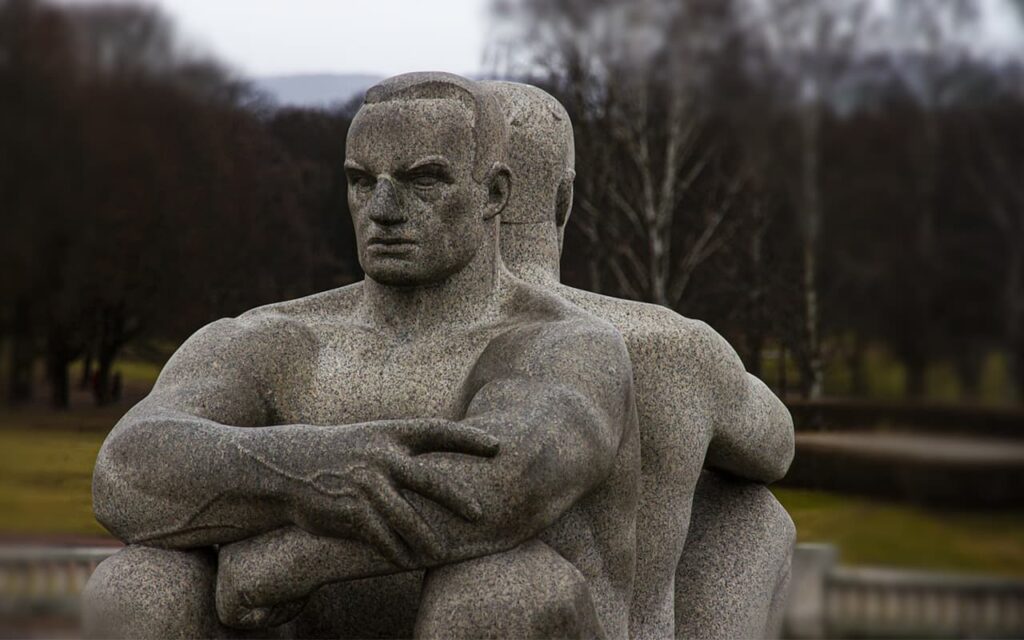The unique and amazing Vigeland Sculpture Park is the most famous park in Norway. All of its exhibits were created by one genius, the world-famous Norwegian sculptor Gustav Vigeland, who worked on its creation for 35 years. The park was founded in 1907-1942 and covers an area of 30 hectares.
Vigeland Park is an insanely attractive and strange place in Oslo, it impresses with its originality and mystery, evoking different emotions in visitors: incomprehension, surprise, irritation, curiosity and admiration. These sculptures caused great controversy during the author’s lifetime and continue to do so today.
When creating sculptures, Vigeland emphasized the inner state of a person, which is reflected in his works.
The park features 227 sculptures made of bronze, granite and wrought iron. Each sculpture reflects the complexity and versatility of human nature, the whole range of emotions and contradictions: stormy joy, care, self-sacrifice, anger and despair, fear and anxiety. The sculptures laugh and cry, are born and die.
Most of them depict people in various activities, such as hugging, running, wrestling, dancing, etc.
The Garden of People, as the sculpture park is also called, is not just a reflection of the author’s views on the world, it is an attempt to convey the psychology of people who are so different and yet so similar.
Human time on earth is only a part of the eternal cycle of time movement without beginning and end. All the creations have a deep philosophical meaning, depicting human life from the moment of birth to death.
Almost all the sculptures presented in the park are nude. Most of the sculptures are arranged in compositions that amaze the imagination and make you think.
The playground is an illustration of the first year of human life. Here you can also meet four babies who represent the four human temperaments. The most famous of the babies is an angry boy, who has long been the emblem of the park.
The rest of the park is an illustration of human life in all its manifestations. For example, there are 58 sculptures on the bridge dedicated to the relationship between a man and a woman and the relationship between adults and children in all possible colors and shades.
Right behind the bridge is a group of fountains. One of them – “The Burden of Life” – represents the cycle of human life. There are compositions around the perimeter of the fountain that represent different stages in a person’s life.
The trees of life represent first love and first loss, loneliness and harmony, happy offspring and even death.
The culmination of the Garden of People is the Monolith Plateau, in the center of which is a grandiose 17-meter obelisk – the pinnacle of Gustav Vigeland’s work, of which he said: “This is my religion”.
The monolith consists of intertwined human bodies depicting the whirlpool of life. At the bottom are the dead bodies of those who did not survive the general struggle for life and the elderly. Closer to the top are young people, and at the very top of the Monolith are babies. Moving upward is a movement toward the light, a desire to comprehend the divine, to become closer to the spiritual, and a movement into the future.
Each sculpture is imbued with imagery and symbolism of different cultures. This is the main reason why Vigeland Park differs from other sculpture parks around the world.
The author wanted to convey to the viewers the idea that the meaning of life lies in spirituality and the pursuit of light forces.
